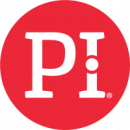Despite being a necessary skill to develop, cold outreach does not have a good reputation among salespeople. A 2018 survey of B2B salespeople found that 53 percent said they give up too easily during cold calls while 48 percent are too scared to make them. Sending an email is a lot less stressful but not guaranteed to be more effective, with only 8.5 percent of cold sales emails receiving a response.
Given the stress and perceived ineffectiveness of cold outreach, it’s not hard to understand why the tactic gets a bad rap among reps. The thing is, it doesn’t have to be this way. Paul Smaha, an inside sales representative at The Predictive Index, conducts cold outreach every day, and while he acknowledges that it can be uncomfortable, to him the pros much outweigh the cons.
“A fundamental benefit cold outreach provides is the ability to pick and choose who you reach out to and when you reach out,” said Smaha. “You’re able to curate a list of the best and most-likely-to-convert personas for your product all on your own.”
Cold outreach is not something people are or are not good at. It’s a skill like any other that takes patience and practice to develop. That said, there are some tips and tricks that can shorten the learning curve, and Smaha shared his best ones for both cold emails and calls with Built In Boston.
Companies use The Predictive Index’s talent optimization platform to better understand candidate-role fit and how to properly motivate and inspire teams.
How often do you use cold outreach methods, and why and when do you turn to these methods?
I find myself lucky to have joined an organization like The Predictive Index. From the outset, PI encouraged experimentation and gave me the necessary tools to give cold outreach a go. While it might sound strange, I willingly subject myself to the discomfort of cold outreach every day and suggest others do the same.
Ultimately, I’ve found that cold outreach affords me a tremendous amount of control over my own success. Your prospects are selective with who they speak to, so why not do the same? I can’t emphasize enough how much autonomy cold outreach gave me when I first started out.
I always went into the next day knowing that if I have the ability to create my own success but don’t execute, that’s on me. It’s quite the motivator. Having a solid approach to cold outreach puts the control back in your hands. When stress starts creeping in as leads start slowing down, you can take comfort knowing you’ll be fine.
Ultimately, I’ve found that cold outreach affords me a tremendous amount of control over my own success.”
Can you share a time when cold outreach worked for you? What did you do and why was it successful?
When I first started at The Predictive Index, I was familiar with cold outreach and what it entailed, but was no expert. I was taught it all starts with that first touch, whether that’s an email or an initial call. In this instance, it started with an email.
There are a few components of a good cold email: a concise subject line, a personalized introduction, mentioning an obstacle or pain someone in their industry would face, how your company solves it and then a quick call to action. Consider that first email an introduction. That’s the purpose of the email, to get that next call. And that next call is where the magic happens.
The first thing I did on that next call was break the ice, set the agenda and give the prospect a way out. Tone is incredibly important here. I was curious but not judgemental, direct but not crass. Getting too excited on a call that’s going well is probably one of the most difficult obstacles to overcome. It’s something I struggled with when I first started, and it’s especially apparent on a cold call. From that situation, I finally figured that out and turned my tone into one of the most effective tools at my disposal.
If someone’s going to employ cold outreach methods, what should they definitely do and what should they definitely avoid?
We’ve talked about cold emails, but what about cold calls? The first 30 seconds of a call can be either your best friend or your worst enemy. You can break the ice and diffuse the apprehension most people have when talking to a salesperson or you can lose them before they even know what you’re selling.
There are many approaches to navigating those first 30 seconds, and I’m a huge proponent of using humor to diffuse tension. For example, I might open with, “Fair warning, this is indeed one of those super exciting sales calls, so it’s totally fair game to hang up on me.” It sounds silly, but by not taking yourself too seriously, you avoid the stereotype of the overly pushy salesperson. For prospects, it’s quite the breath of fresh air.
We’ve all heard the saying, “It’s a numbers game.” However, I’ve found focusing solely on numbers at the expense of quality proves fruitless in the end. I am lucky to have found myself at PI where we focus on balancing both quality and quantity. It’s this culture that allows me to master a skill I can take forward in my career. I’ll always have a tool I can use to control my own success — yes, even as a closer.






